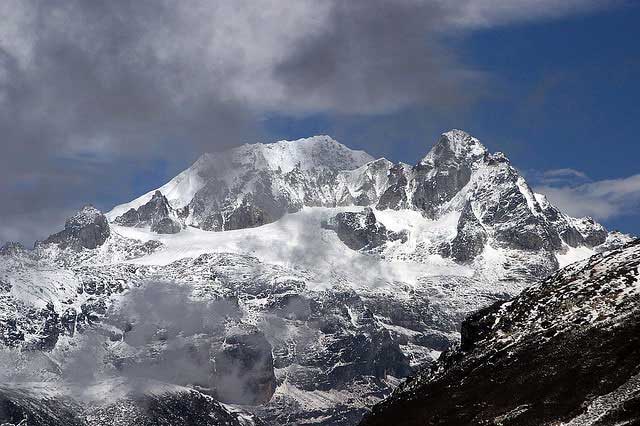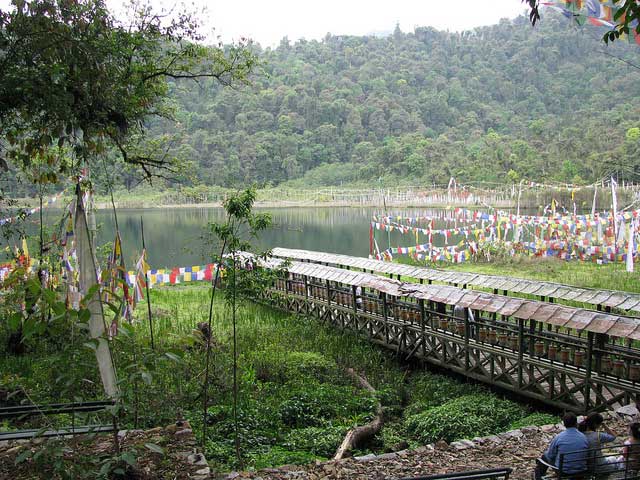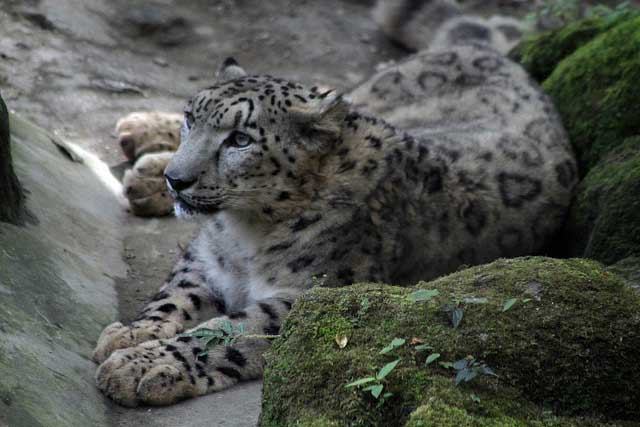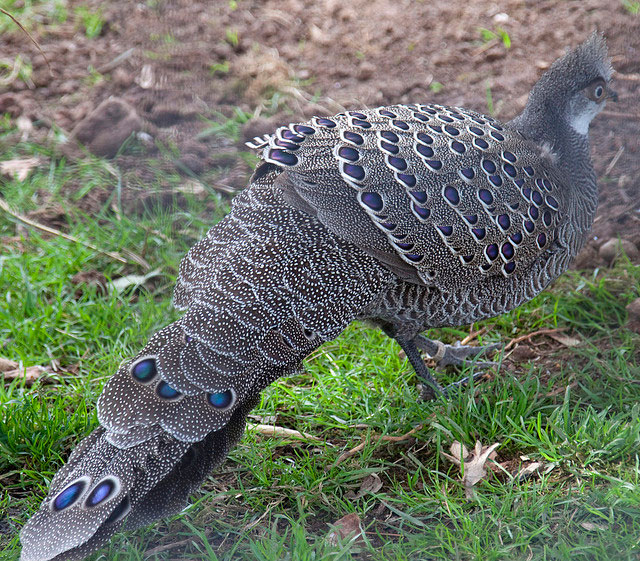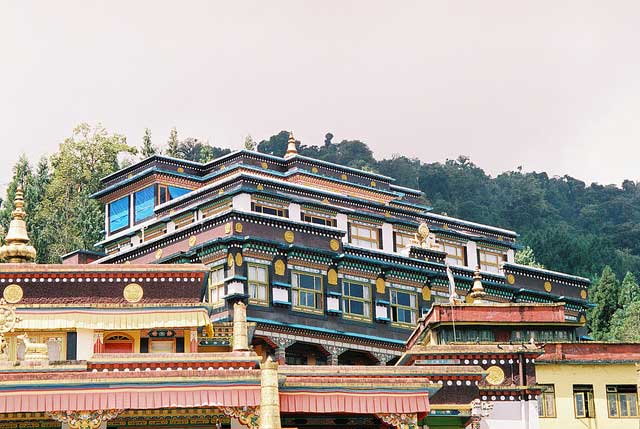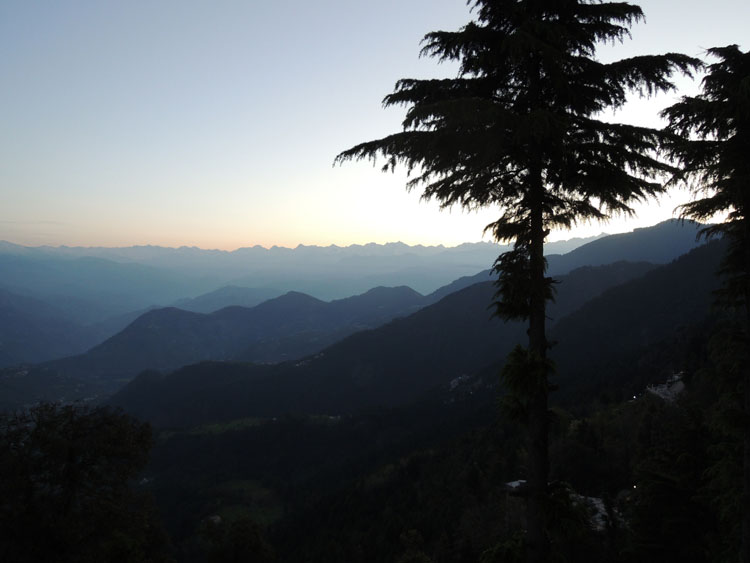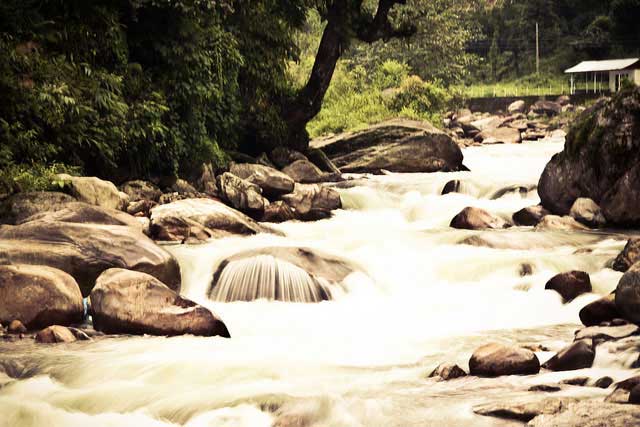Nestled in the heart of the mighty Himalayas, Mount Kanchendzonga —the world’s third-highest peak—stands as a symbol of awe-inspiring beauty and spiritual significance. Located in the northeastern Indian state of Sikkim , this majestic mountain offers adventurers an unparalleled trekking experience. Whether you’re a seasoned mountaineer or a nature enthusiast seeking solace amidst pristine landscapes, trekking around Mt. Kanchendzonga is nothing short of a transformative journey. From its snow-capped peaks to its lush valleys teeming with biodiversity, every step along the trail unveils the raw grandeur of the Himalayas.
Why Trek to Mt. Kanchendzonga?
A UNESCO World Heritage Site
In 2016, the Kanchendzonga National Park , which encompasses much of the trekking routes around Mt. Kanchendzonga, was declared a UNESCO World Heritage Site . This recognition highlights the region’s unique blend of natural beauty, cultural heritage, and ecological importance. The park spans over 1,784 square kilometers and is home to rare species like the snow leopard , red panda , and Himalayan blue sheep , making it a paradise for wildlife enthusiasts. Its diverse ecosystems range from subtropical forests at lower altitudes to alpine meadows and glacial zones near the summit.
The designation also acknowledges the sacred relationship between the local communities and the mountain. For centuries, the indigenous Lepcha and Bhutia tribes have revered Kanchendzonga as a living deity, believing that their ancestors reside within its towering peaks. This spiritual connection adds a profound layer of meaning to any trek undertaken here.
Spiritual Significance
For the people of Sikkim, Mt. Kanchendzonga is not just a mountain—it is a sacred entity revered as the abode of gods. Known locally as Kangchenjunga , meaning “The Five Treasures of Snow,” the peak represents five repositories of God: gold, silver, gems, grain, and holy books. Pilgrims and trekkers alike are drawn to its spiritual aura, believing that the mountain embodies divine energy and protection.
Every year, thousands of devotees undertake the Kangchenjunga Circuit Pilgrimage , visiting monasteries, lakes, and caves believed to be imbued with mystical powers. Even non-religious travelers often report feeling a sense of peace and reverence while trekking through this sacred landscape.
Diverse Landscapes
The trekking trails around Mt. Kanchendzonga traverse some of the most diverse terrains in the Himalayas. Starting from subtropical forests filled with orchids, ferns, and bamboo groves, the trails gradually ascend into temperate zones dominated by oak, maple, and rhododendron trees. Higher up, trekkers encounter alpine meadows dotted with wildflowers, followed by barren rocky expanses and glacial moraines.
Each day on the trail brings new wonders, from cascading waterfalls and serene lakes to panoramic views of towering peaks. The ever-changing scenery ensures that no two days feel the same, keeping trekkers engaged and inspired throughout their journey.
Popular Trekking Routes Around Mt. Kanchendzonga
1. Goechala Trek: The Crown Jewel of Sikkim Treks
The Goechala Trek is arguably the most famous route for experiencing the magnificence of Mt. Kanchendzonga. Spanning approximately 80 kilometers over 8-10 days , this moderate-to-difficult trek takes you to the Goechala Pass (16,207 feet) , offering breathtaking views of the Kanchendzonga massif, along with other giants like Pandim , Simvo , and Singalila .
Highlights of the Goechala Trek
- Stunning Sunrise Views : Witness the golden hues of sunrise illuminating the snow-clad peaks from Dzongri Top. On clear mornings, the reflection of Kanchendzonga in the still waters of Samiti Lake creates a surreal spectacle.
- Lachen and Lachung Valleys : These picturesque valleys serve as starting points for many treks and are known for their vibrant monasteries and traditional villages. The drive to these valleys alone is worth the trip, with winding roads flanked by dense forests and rushing rivers.
- Thangsing Valley : A serene valley surrounded by towering mountains, perfect for acclimatization. Trekkers often spend a rest day here to soak in the tranquility and prepare for higher altitudes.
- Samiti Lake : A sacred glacial lake believed to be protected by local deities. Many trekkers perform small rituals or leave offerings before continuing their journey.
- Challenging Terrain : Cross suspension bridges, navigate rocky paths, and ascend steep ridges, testing your endurance and skills. The final push to Goechala Pass involves traversing icy slopes and navigating unpredictable weather conditions.
Best Time to Trek
The best time to undertake the Goechala Trek is during the pre-monsoon months (April to June) and post-monsoon months (September to November) when the skies are clear, and visibility is excellent. Winter treks are possible but require advanced preparation due to heavy snowfall and extreme cold.
2. Green Lake Trek: For the Adventurous Souls
The Green Lake Trek , also known as the Zemu Glacier Trek , is one of the most challenging yet rewarding treks in Sikkim. This expedition-style trek spans about 90 kilometers over 12-14 days and takes you deep into the remote wilderness of the Kanchendzonga region.
Highlights of the Green Lake Trek
- Zemu Glacier : One of the largest glaciers in Asia, located at the base of Mt. Kanchendzonga. Standing at the edge of this massive ice field feels like stepping into another world.
- Remote Villages : Visit isolated hamlets like Lachen and Thangu , where time seems to stand still. Interact with locals who live simple yet fulfilling lives, untouched by modern conveniences.
- Flora and Fauna : Encounter rare species like musk deer, Himalayan tahr, and countless bird varieties. Keep an eye out for elusive snow leopards, though sightings are extremely rare.
- High-Altitude Lakes : Explore pristine lakes such as Green Lake and Tikche Tso , nestled amidst rugged terrain. These hidden gems are often frozen during winter, adding to their mystique.
- Extreme Adventure : Navigate moraines, icy streams, and unpredictable weather conditions, pushing your limits. This trek is not for the faint-hearted but promises unmatched rewards for those who persevere.
Who Should Attempt This Trek?
Due to its technical difficulty and remote location, the Green Lake Trek is recommended only for experienced trekkers who are well-prepared physically and mentally. Proper permits and guides are mandatory for this trek, and participants must carry specialized gear for high-altitude expeditions.
3. Dzongri Trek: A Short Yet Scenic Journey
If you’re short on time but still want to experience the magic of Mt. Kanchendzonga, the Dzongri Trek is an ideal choice. Spanning about 40 kilometers over 5-6 days , this relatively easy trek offers stunning views without requiring extensive physical exertion.
Highlights of the Dzongri Trek
- Dzongri Base Camp : Situated at an altitude of 13,123 feet , this camp provides spectacular views of the Kanchendzonga range. Early risers can watch the sunrise paint the peaks in hues of orange and pink.
- Rhododendron Forests : Walk through vibrant forests bursting with red, pink, and white rhododendron blooms during spring. The sight of these flowers against a backdrop of snow-covered mountains is truly magical.
- Cultural Immersion : Interact with locals in villages like Yuksom , the starting point of the trek, and learn about their traditions and way of life. Yuksom itself is historically significant as the site of Sikkim’s first coronation ceremony.
- Panoramic Vistas : Enjoy unobstructed views of peaks like Mt. Pandim , Mt. Kabru , and Mt. Rathong . The sheer scale and majesty of these mountains leave a lasting impression.
Best Time to Trek
Like other treks in the region, the Dzongri Trek is best enjoyed during the pre-monsoon and post-monsoon seasons. Its shorter duration makes it accessible even for beginners.
4. Sandakphu Trek: The Singalila Ridge Experience
Although technically located in West Bengal, the Sandakphu Trek offers unparalleled views of Mt. Kanchendzonga and is often included in Sikkim itineraries. Spanning about 60 kilometers over 6-7 days , this trek follows the Singalila Ridge , providing sweeping vistas of four of the world’s five highest peaks: Everest , Kanchendzonga , Lhotse , and Makalu .
Highlights of the Sandakphu Trek
- Sunrise Over Everest : Watch the first rays of sunlight kiss the summit of Mount Everest from Sandakphu (11,929 feet). This iconic view is something every trekker dreams of witnessing.
- Vibrant Rhododendrons : Springtime transforms the trail into a riot of colors with blooming rhododendrons. The forest floor comes alive with the sounds of chirping birds and rustling leaves.
- Buddhist Monasteries : Visit ancient monasteries like Tumling and Phalut , adding a spiritual dimension to your trek. Monks often welcome trekkers with warm smiles and cups of butter tea.
- Tea Gardens of Darjeeling : Begin your journey amidst the rolling tea estates of Darjeeling before ascending into the mountains. The contrast between manicured gardens and untamed wilderness is striking.
Who Can Attempt This Trek?
The Sandakphu Trek is moderately challenging and suitable for both novice and experienced trekkers. Its accessibility and scenic beauty make it a popular choice among tourists.
Essential Tips for Trekking Around Mt. Kanchendzonga
1. Acclimatization is Key
High-altitude treks can lead to altitude sickness if proper acclimatization isn’t followed. Spend adequate time at intermediate camps to allow your body to adjust to the thin air. Symptoms of altitude sickness include headaches, nausea, dizziness, and fatigue. If symptoms worsen, descend immediately and seek medical attention.
2. Obtain Necessary Permits
Treks within the Kanchendzonga National Park require special permits issued by the Sikkim Tourism Department . These permits ensure sustainable tourism practices and help protect the fragile ecosystem. Apply for permits well in advance, as processing times may vary.
3. Hire Experienced Guides
Given the challenging terrain and unpredictable weather, hiring a certified guide is highly recommended. Local guides possess invaluable knowledge about the trails, weather patterns, and emergency protocols. They also act as cultural ambassadors, sharing stories and insights about the region’s history and traditions.
4. Pack Smart
Carry warm clothing, sturdy trekking shoes, rain gear, sunscreen, and a first-aid kit. Don’t forget essentials like a headlamp, power bank, and reusable water bottles. Layered clothing is crucial, as temperatures can fluctuate dramatically throughout the day.
5. Respect Local Customs
Sikkim is deeply rooted in Buddhist traditions. Always seek permission before entering monasteries, remove shoes when required, and avoid littering to preserve the sanctity of the environment. Supporting local businesses and interacting respectfully with villagers enhances your overall experience.
Accommodation Options Along the Trails
While camping under the stars is a quintessential part of trekking in Sikkim, there are also basic lodges and homestays available in certain villages along the routes. Staying with local families allows you to immerse yourself in their culture and enjoy homemade meals prepared with fresh, organic ingredients. Popular accommodations include:
- Tented Camps : Set up near scenic spots like Dzongri and Thangsing, these camps offer basic amenities and stunning views.
- Forest Rest Houses : Managed by the forest department, these rest houses provide shelter and meals for trekkers.
- Homestays : Stay with local families in Yuksom, Lachen, or Lachung to experience authentic Sikkimese hospitality.
Best Nearby Attractions
- Tsomgo Lake : A glacial lake near Gangtok, frozen in winter and surrounded by prayer flags.
- Nathula Pass : A historic Indo-China border pass with stunning views.
- Ravangla : Home to the massive statue of Lord Buddha and panoramic mountain views.
- Yumthang Valley : Known as the “Valley of Flowers,” it bursts into color during spring.
- Pelling : Offers close-up views of Mt. Kanchendzonga and houses ancient monasteries.
Best Nearby Restaurants
- The Golden Tips Tea Lounge : Serves exquisite teas paired with snacks.
- Sonam’s Kitchen : Offers authentic Sikkimese cuisine.
- Baker’s Café : Perfect for coffee and baked goods.
- Namgyal Restaurant : Serves multi-cuisine dishes with a focus on Tibetan fare.
- Local Eateries : Try momos, thukpa, and churpee for a taste of local flavors.
Weather
Sikkim experiences four distinct seasons:
- Spring (March to May) : Mild temperatures and blooming rhododendrons.
- Summer (June to August) : Warm days and occasional rain showers.
- Autumn (September to November) : Cool and dry, ideal for trekking.
- Winter (December to February) : Cold with potential snowfall at higher altitudes.
The best time for trekking is during spring and autumn when the weather is stable and visibility is excellent.
Accessibility
- By Air : Fly to Bagdogra Airport (IXB) and hire a taxi to reach Gangtok or Yuksom.
- By Train : Nearest railhead is New Jalpaiguri (NJP), connected to major cities.
- By Road : Regular buses and taxis operate from Siliguri and Darjeeling to Sikkim towns.
How to Reach
- From Delhi/Kolkata : Take a flight to Bagdogra or a train to New Jalpaiguri, then drive to Gangtok/Yuksom.
- From Bangalore/Mumbai : Direct flights to Bagdogra are available; alternatively, connect via Kolkata.
Conclusion
Trekking around Mt. Kanchendzonga is more than just a physical challenge—it’s a soul-stirring adventure that connects you with nature, spirituality, and humanity. Whether you choose the iconic Goechala Trek , the rugged Green Lake Trek , or the scenic Dzongri Trek , each path leads to unforgettable moments and breathtaking vistas. Plan your journey today and let the majestic Himalayas leave an indelible mark on your heart.
FAQ’s with Answers
- What is the highest altitude reached during these treks?
Goechala Pass reaches 16,207 feet, while Sandakphu stands at 11,929 feet. - Do I need prior trekking experience?
Moderate treks like Dzongri and Sandakphu are beginner-friendly, but advanced treks like Green Lake require experience. - Are permits mandatory for all treks?
Yes, permits are required for treks within the Kanchendzonga National Park. - What should I pack for high-altitude treks?
Warm layers, waterproof gear, sturdy shoes, sunscreen, and a first-aid kit. - Can I trek solo?
Solo treks are allowed, but hiring a guide is strongly recommended for safety. - Is food provided during the trek?
Most guided treks include meals; otherwise, carry provisions for self-sufficiency. - How fit do I need to be?
Good cardiovascular fitness and stamina are essential, especially for longer treks. - Are there medical facilities along the trail?
Basic first-aid is available, but serious emergencies may require evacuation. - What wildlife might I encounter?
Red pandas, snow leopards, Himalayan tahrs, and various bird species. - Can children join the treks?
Children above 10 years can participate in easier treks like Dzongri.


